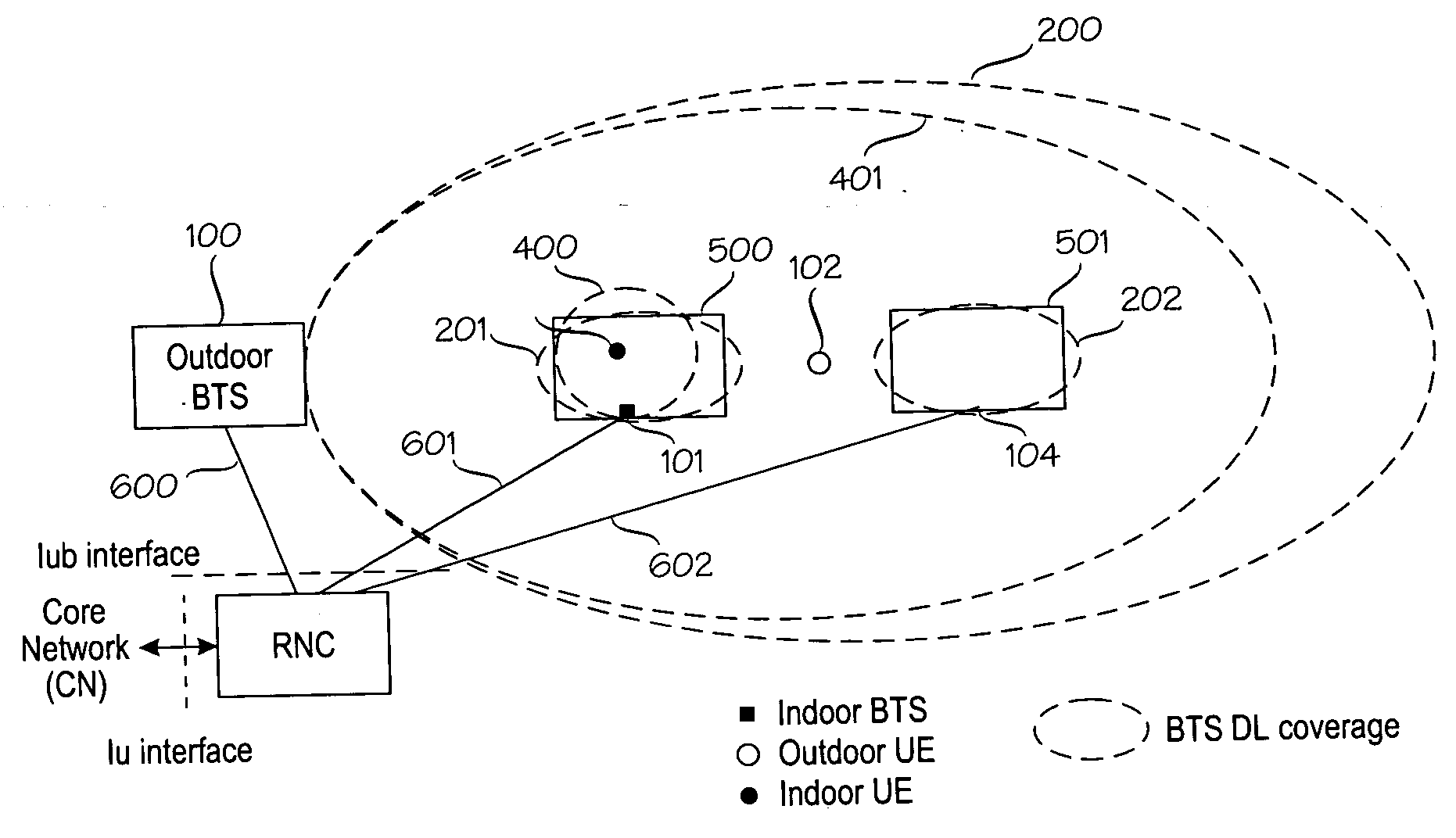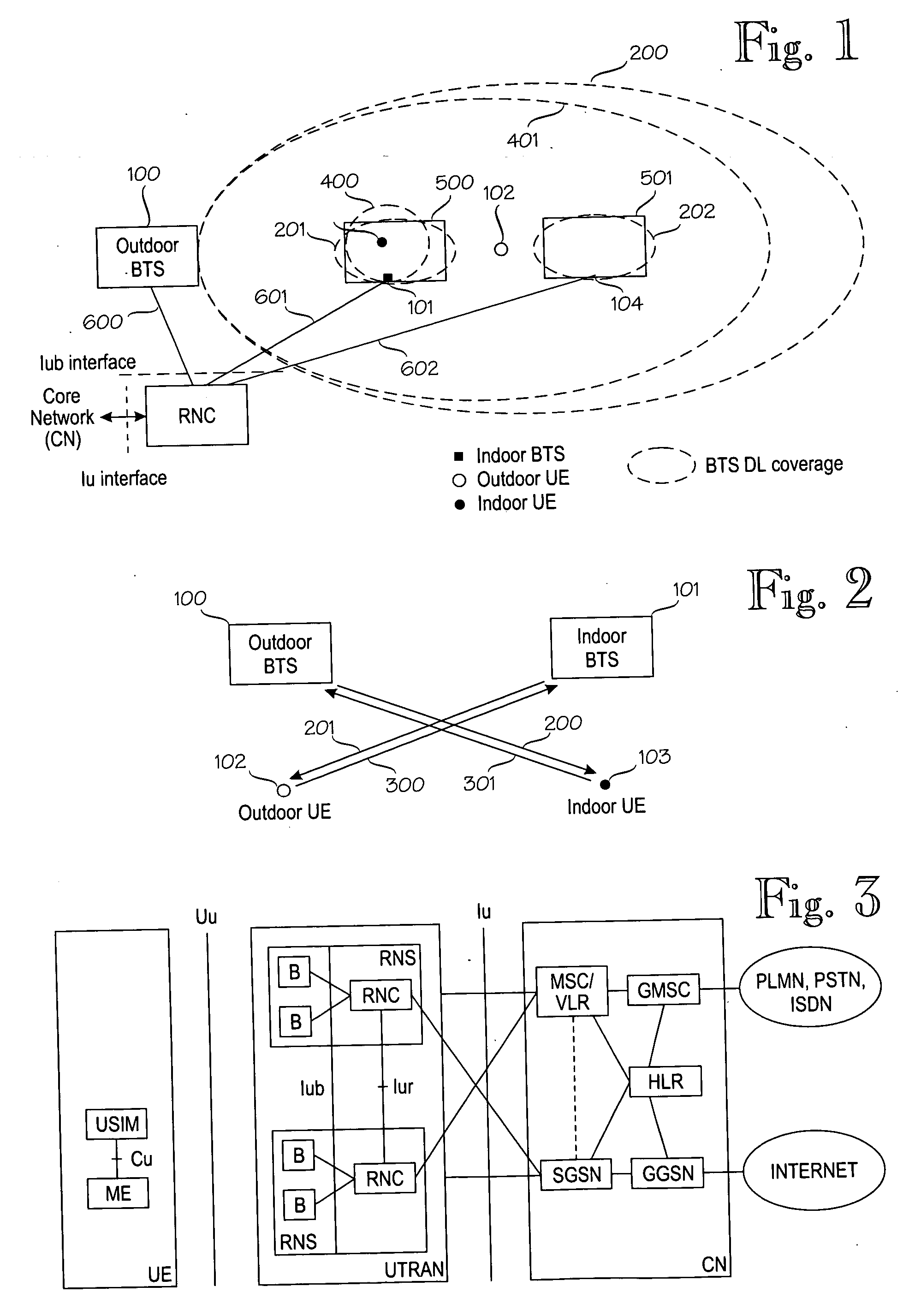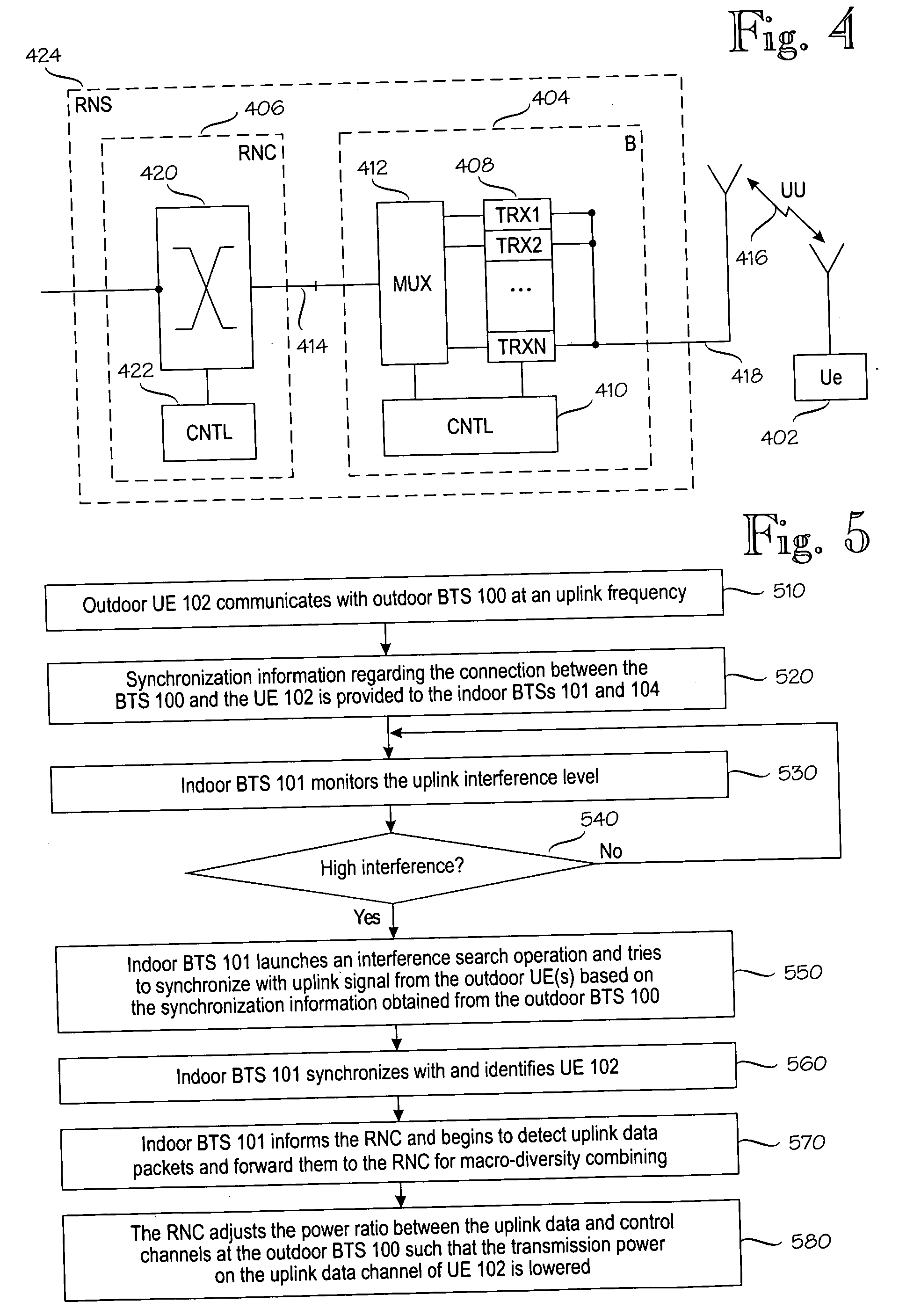Method of reducing interference in indoor cell in wireless cellular communication network
a wireless cellular communication and indoor cell technology, applied in the field of wireless cellular communication networks, can solve the problems of increasing inter-cell interference in the uplink direction, interference to the other, and limited capacity of the cdma system, so as to reduce the transmission power of the uplink transmission signal, reduce the inter-cell interference level of the uplink, and reduce the loss of quality of the uplink data channel
- Summary
- Abstract
- Description
- Claims
- Application Information
AI Technical Summary
Benefits of technology
Problems solved by technology
Method used
Image
Examples
Embodiment Construction
[0023] The present invention may be applied to any wireless cellular communication network which includes base stations with downlink coverage areas of different sizes so that an uplink transmission signal of user equipment communicating with a base station with a larger downlink coverage area may cause interference to a base station with a smaller downlink coverage area, when the base stations are operating at the one and same uplink carrier frequency. Multiplex methods are used to divide the limited frequency resources of a cell and a cellular network between the different subscribers and mobile stations. Three different methods are mainly used today: frequency division multiple access (FDMA), time division multiple access (TDMA), and code division multiple access (CDMA). The present invention can be applied together with any of these different multiple access methods, or to systems utilizing combinations of different multiple access methods. The present invention is especially ap...
PUM
 Login to View More
Login to View More Abstract
Description
Claims
Application Information
 Login to View More
Login to View More - R&D
- Intellectual Property
- Life Sciences
- Materials
- Tech Scout
- Unparalleled Data Quality
- Higher Quality Content
- 60% Fewer Hallucinations
Browse by: Latest US Patents, China's latest patents, Technical Efficacy Thesaurus, Application Domain, Technology Topic, Popular Technical Reports.
© 2025 PatSnap. All rights reserved.Legal|Privacy policy|Modern Slavery Act Transparency Statement|Sitemap|About US| Contact US: help@patsnap.com



